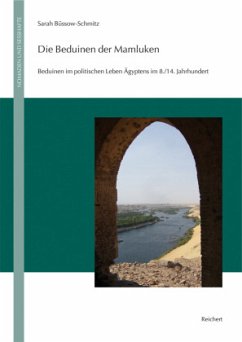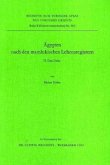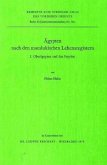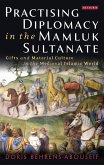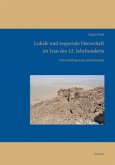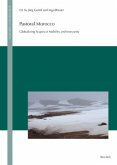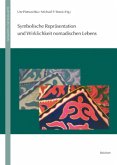This is the first monograph on Mamluk history with a focus on the Bedouins as political actors. The study concentrates on the communication between representatives of Bedouin groups on the one hand and the Sultan and the Mamluk Emirs on the other. A systematic analysis of communication between the representatives of the two parties, as it is depicted in contemporary Arabic sources, reveals patterns and rules in their actions. When the Mamluks seized power in Egypt in 1250, local Bedouins (arab in Arabic) mounted considerable resistance. The Bedouins were the group with the largest military and political power in the Mamluk Empire, after the ruling Mamluks themselves. Therefore, the relations between Bedouins and Mamluks were tense.
The Mamluks were eager to demonstrate their supremacy and often needed to force the Bedouins to acknowledge it. In return, they made concessions to the Bedouins in the form of certain privileges. During the second half of the fourteenth century, Bedouin groups in Egypt gained additional power, forcing the Mamluks to devise counter strategies. However, a Mamluk Bedouin policy could only be developed in continuous bargaining processes with the Bedouins. The study scrutinises these bargaining processes from the perspective of symbolic communication. It is shown that both groups used a common repertoire of rules, gestures and institutions that were essential to negotiating, shaping and adjusting their relations.
The book's title "The Mamluks' Bedouins" points to the fact that this study is based on source texts that were exclusively written by Mamluks or authors close to the Mamluks, because there is a complete lack of Bedouin testimonies for this time. Therefore, a chapter of the book is devoted to the perception and depiction of Bedouins in Mamluk-era Arabic sources. Another chapter discusses the question which resources were at the disposal of Bedouin groups in the various landscapes of Egypt.
With its three foci-Egyptian landscapes from a Bedouin perspective, the literary styling of Bedouin images, and symbolic communication between Bedouin representatives and Mamluks-this study offers the first comprehensive overview on Bedouin groups in society and politics of Mamluk Egypt.
Hinweis: Dieser Artikel kann nur an eine deutsche Lieferadresse ausgeliefert werden.
The Mamluks were eager to demonstrate their supremacy and often needed to force the Bedouins to acknowledge it. In return, they made concessions to the Bedouins in the form of certain privileges. During the second half of the fourteenth century, Bedouin groups in Egypt gained additional power, forcing the Mamluks to devise counter strategies. However, a Mamluk Bedouin policy could only be developed in continuous bargaining processes with the Bedouins. The study scrutinises these bargaining processes from the perspective of symbolic communication. It is shown that both groups used a common repertoire of rules, gestures and institutions that were essential to negotiating, shaping and adjusting their relations.
The book's title "The Mamluks' Bedouins" points to the fact that this study is based on source texts that were exclusively written by Mamluks or authors close to the Mamluks, because there is a complete lack of Bedouin testimonies for this time. Therefore, a chapter of the book is devoted to the perception and depiction of Bedouins in Mamluk-era Arabic sources. Another chapter discusses the question which resources were at the disposal of Bedouin groups in the various landscapes of Egypt.
With its three foci-Egyptian landscapes from a Bedouin perspective, the literary styling of Bedouin images, and symbolic communication between Bedouin representatives and Mamluks-this study offers the first comprehensive overview on Bedouin groups in society and politics of Mamluk Egypt.
Hinweis: Dieser Artikel kann nur an eine deutsche Lieferadresse ausgeliefert werden.

